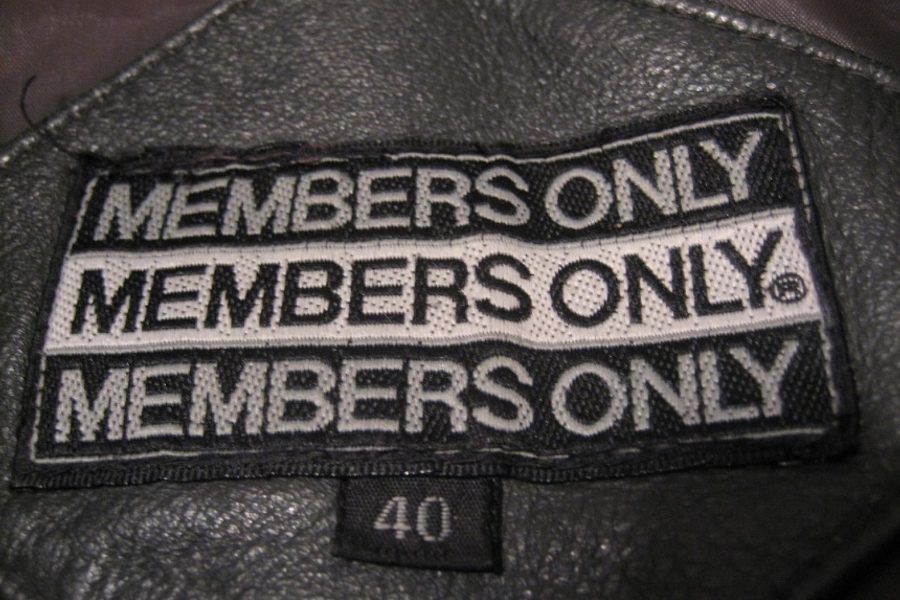
Unions have taken some hard hits in recent years, with even greater existential threats on the horizon. Labor must consider alternative forms of organization if they want to survive. But unions should watch out for unintended consequences of those new forms of organizing.
In their report for the Century Foundation, Moshe Marvit and Leigh Anne Schriever highlight case studies in “members-only” organizing, where unions cannot reach majority status for legal certification but maintain a workplace organization made up of a minority of workers that presses issue campaigns against the boss. Charles J. Morris, in his 2005 book The Blue Eagle at Work, reminds us that in its first few years, the National Labor Relations Board (NLRB) used to certify minority unions as the bargaining agent for that union’s members only, and that such a mechanism still exists (although the modern Board has dodged efforts to get a ruling to respond to Morris’ assertion). Some unions in “right to work” states are contemplating “members-only” certifications as a solution to the “free rider” problem, that workers can choose to opt out of joining (and paying dues to) a union, but the union is still legally compelled to represent them. “You want the contract? Join the union,” goes the simplistic (albeit attractive) logic.
But make no mistake: Non-exclusive representation will also inevitably lead to competitive union situations at workplaces. If a union, for whatever reason, only seeks to represent a portion of a bargaining unit, another organization will come along to recruit the workers who are left out by promising better benefits or an alternative approach to seeking improvements on the job.
This may not be a bad thing. The combination of exclusive representation (in which a workplace either does or does not have a union, and if it does, all employees who have the covered job titles are automatically represented), and agency fee (in which all of those represented employees join the union or at least pay a fee to the union for the bargaining, benefits and grievance services that the union provides) is a uniquely American collective bargaining framework — and a relatively new one, at that. Wall-to-wall certifications were sought by the industrial unions of the CIO to stave off AFL craft unions from coming along and claiming a handful of job titles at a workplace. By the end of the Depression, the CIO’s perspective on union certifications (that bigger is better and that a union should represent all workers in as many job titles as possible across the enterprise) prevailed at the NLRB, partly because the CIO was better than the AFL at working the system and partly because employers generally prefer to deal with one union rather than a multitude of unions.
The concept of agency fee evolved out of World War II when unions were bound by wage freezes and no-strike pledges and were faced with the threat of a wave of membership resignations in protest. It was a concession from the government in exchange for the far greater concessions in wages and power that unions made in the interest of workplace stability and war production.
The important point is that the current American model of union representation is not the natural or inevitable form that unions must take. It was only acceptable to employers in a post-war environment that prized workplace peace, stability and labor-management collaboration in exchange for wages and benefits for workers that kept pace with increased productivity — a far cry from the situation workers and unions face today.
In other countries, competitive unions are the norm. Unions distinguish themselves from each other on the basis of ideology (communist, Trotskyist, Christian democratic, etc.) or party affiliation and compete over their bargaining demands, their ability to turn out members for actions and their ability to “work with” the boss (or not). In Germany, this competition takes the form of proportional representation at the bargaining table (Literally, the number of representatives that any given union has in negotiations is directly proportional to the percentage of workers who voted for it.) In France, the competition can be somewhat hostile, with the first union to take a deal in a round of bargaining potentially opening themselves up to accusations from a rival union of a not-good-enough deal, membership raids and loss of status as workplace leaders.
American unions used to look like this. Take the New York City hotel industry as an example. Labor history buffs may recall a failed 1911-12 city-wide strike by the Industrial Workers of the World (which lost crucial middle-class support when Wobbly organizer Joseph Ettore made the inflammatory proclamation, “It is the unsafest proposition in the world for the capitalists to eat food prepared by members of your union”). But after the strike’s end, a union remained behind in the industry. The independent Amalgamated Food Workers maintained the Wobbly tradition of anarchist direct action in the city’s hotels and fancy restaurants for decades in competition with the “official” HERE locals.
In time, they were joined in competition by the Communist-affiliated Food Workers Industrial Union. The unions called competing general strikes every few years, and the HERE locals would occasionally swoop in and sign a sweetheart deal with a few employers. This dynamic continued until the Depression-plagued hotel industry, desperate for labor peace, signed an industry-wide neutrality agreement in 1938 with the merged unions, the still-powerful NY Hotel Trades Council.
The NLRB was designed in response to competitive union situations like the 1930s New York hotel industry. But rapid wins by unions and employers’ desire for labor peace quickly made exclusive representation the norm. This earlier era of minority union certifications was a forgotten relic until Morris’ book. But this alternative model is getting dusted off — and not just by the radical left.
Following the devastating NLRB election loss at Volkswagen’s Chattanooga, Tenn., plant in early 2014, the United Auto Workers have petitioned for recognition as a non-exclusive, “members only” union. Hot on their heels, an independent union, the “American Council of Employees,” has contested for turf in the plant. ACE is a part of a long history of non-union “unions” in the South: organizations that appear to offer all of the accouterments of representation without any risk of conflict with the boss. I’d call them a company union, but I suspect that VW is aghast at this unforeseen development.
If labor cedes exclusivity, we can expect more independents like ACE to fill the void. We should also expect the Horseshoers and Hod Carriers and the whole cottage industry of corrupt unions that were long ago thrown out of the AFL-CIO for unprincipled raiding to troll around for disgruntled dues payers. And nobody should be surprised if Koch brothers-funded, States Policy Network affiliates like Michigan’s Mackinac Center shop around the legal and member benefits services of new, explicitly anti-union “unions.”
Still, there is some promise in the idea of what would have ordinarily been opposition caucuses having an immediate go at the boss. An opposition caucus is essentially a slate of rank-and-file members who run for union office against the incumbent leadership on a “change” platform. Some opposition caucuses come and go in a single election cycle; others become an ongoing internal political opposition to union leadership. Most are failures. Stanley Aronowitz provides a useful history of rank-and-file union reform efforts in the fourth chapter of his recent book, The Death and Life of American Labor. He argues that successful opposition caucuses are limited by the scope of bargaining and the drudgery of contract bargaining and grievance handling that necessarily blunts their edge and limits their vision. (And that’s just the examples of labor renewal, like the Chicago Teachers Union and TWU Local 100, that are celebrated.)
Most opposition caucuses never transcend their opposition status and are often viewed by leaders and rank-and-filers alike as unhelpful distractions. In the context of wall-to-wall exclusive representation, unity behind leadership’s bargaining demands is often seen as essential. Members are loathe to highlight divisions within the union on the eve of bargaining — particularly if the election results will be less than decisive. Forced to contest for total power, many opposition efforts can leave the union more divided and vulnerable.
The story of the 2012 Chicago teachers strike — which began as a radical book club that then morphed into an organized caucus that won a clean sweep leadership election, then over 90 percent of members to authorize a strike and turned out all members for the win — has become the stuff of recent legend in part because it is so far outside the norm. Teachers union locals’ leadership tend to turn over more frequently than other international unions. But the result of most contested elections is usually a divided executive board, a leader with the public support of only half the members (or less, in low turnout elections) and an employer that sees those divisions and is ready to pounce. If pluralism was tolerated at the workplace; however, dissidents would be freed up to seek out a militant minority of co-workers and focus their fire on the boss instead of union leadership.
In his book, Stanley Aronowitz goes so far as to advocate that labor abandon “contract unionism” altogether. I’m not ready to go all the way with Stanley on that point. As an organizer, my experience has been that workers still really want to have a contract. But members-only unions and non-exclusive representation could open the door to a hardy band of labor radicals to experiment with his prescription for a new workers movement. Rather than press forward with competing demands on wages and working conditions, an alternative union could demand a voice in the production process, the employer’s business model, its products and its prices and leave it to another union to consolidate any wins in a contract.
And what if those contracts continue to contain “no strike” clauses, which prohibit a broad array of job actions during the terms of the agreement? Well, it’s hard to imagine how they survive such a shake-up in the labor relations framework. If contracts are for members only, couldn’t workers drop membership in one organization to take part in the slow down or work-to-rule action of another? What obligation would a non-exclusive representative have to police the behavior of all employees at the workplace?
If this sounds like chaos, good! The current legal assault on unions deserves nothing less as a response. Exclusive representation allows employers to only deal with one set of organizing tactics and one set of narrow demands. Agency fee allows unions to make unpopular concessions, like unions did during World War II, agreeing to wage freezes for reasons of patriotism or the supposed good of the company, without the threat of an immediate loss in dues revenue. This is a framework that works for employers and that curbed an earlier era of labor militancy. “Labor peace” is actually enshrined in the 1978 decision that the Friedrichs Vs. CTA Supreme Court case seeks to overturn in order to throw the entire public sector into “right to work” chaos.
I’m skeptical that Alito has the fifth vote that he needs to overturn four decades of court precedent. But if I’m wrong, and the Supreme Court votes to gut public sector unions, then the only appropriate response is to show them what the absence of labor peace looks like. And if the billionaire class is so hungry to kill all unions that they would hand us back the tools that we surrendered long ago…well, it behooves us to study our history to remember how we once used those tools.
Shaun Richman is a labor expert at SUNY Empire State University and author of Tell The Bosses We’re Coming: A New Action Plan for Workers in the 21st Century.








